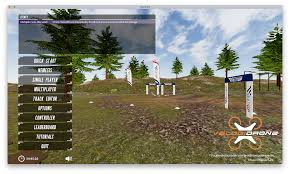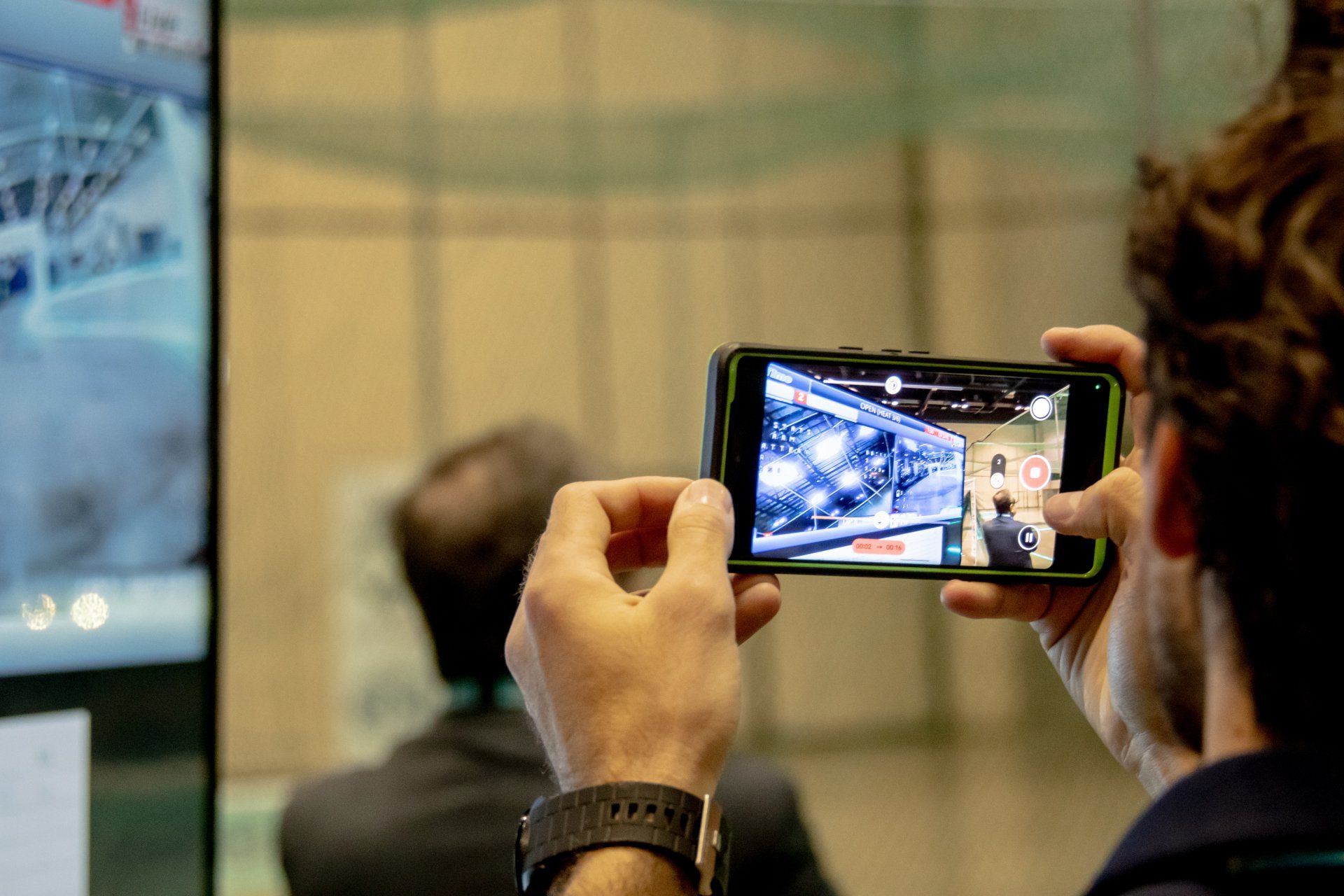How to Start a Team
Drones in School is a comprehensive program that provides many options to participate. Let's learn more about how this works.
What does is take to start a team?
Adult Mentors / Advisors
The success of any educational program is the adult mentors and advisors that lead the student groups involved. Getting started can seem a little daunting if you do not have experience with FPV racing. As a program designed by educators, we are committed to providing the resources needed to get started. With online and live professional development opportunities, free online curriculum, advisor forums, and more, we want you and your students to succeed.
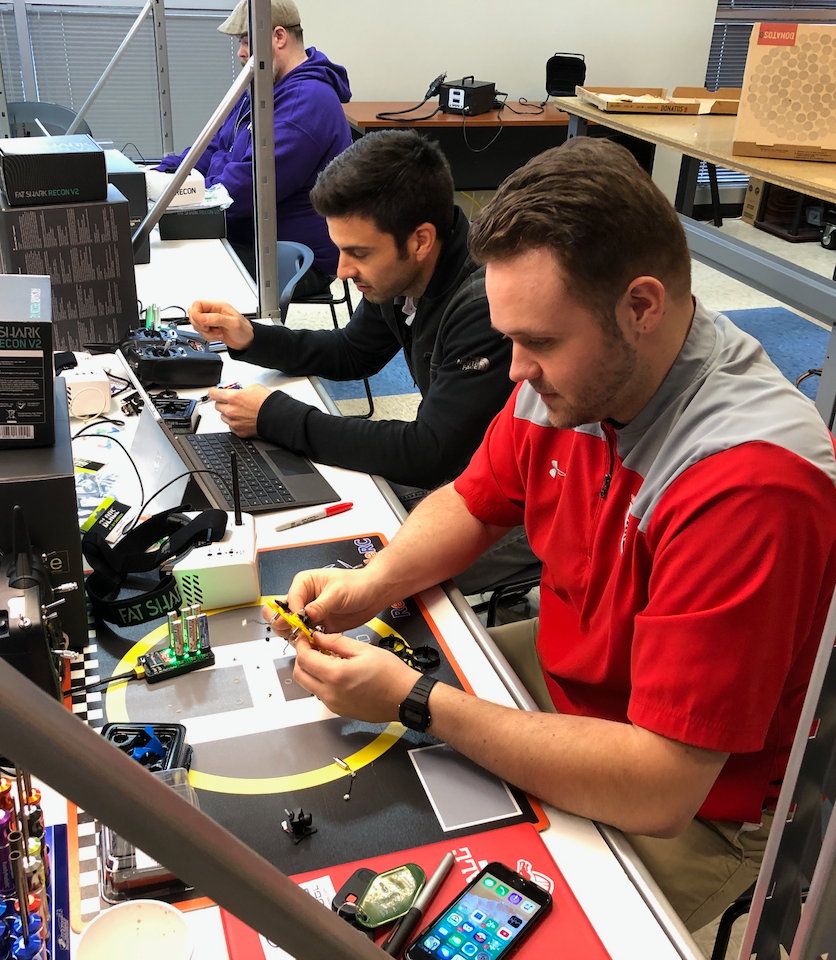
A Drones in School program can be designed to meet the needs of your program and students. Below are a few options:
- Classroom Instruction
- Educators can create a STEM program that covers a broad range of topics by using the Drones in School curriculum in a classroom setting. This includes graphic design, parametric modeling/CAD, engineering, additive manufacturing (3D printing), video production, electronics, aeronautics, project management, entrepreneurship, and marketing skills. Educators are encouraged to build on the included curriculum to create an instructional model that meets their needs.
- After-School Program
- Operating a Drones in School program in an after-school/club format is often an excellent place for groups to begin. An after-school program allows an organization to allocate fewer resources since you only need to purchase equipment for a few teams.
- Hybrid
- Some educators use a few units of the Drones in School curriculum to introduce the program to students and then run an after-school program for students interested in taking their learning to the next level. For example, a class might use a CAD program to design a drone frame and learn about graphic design by creating a logo for a drone racing team. Then, the students who show interest could be invited to join the competitive team in an after-school setting.
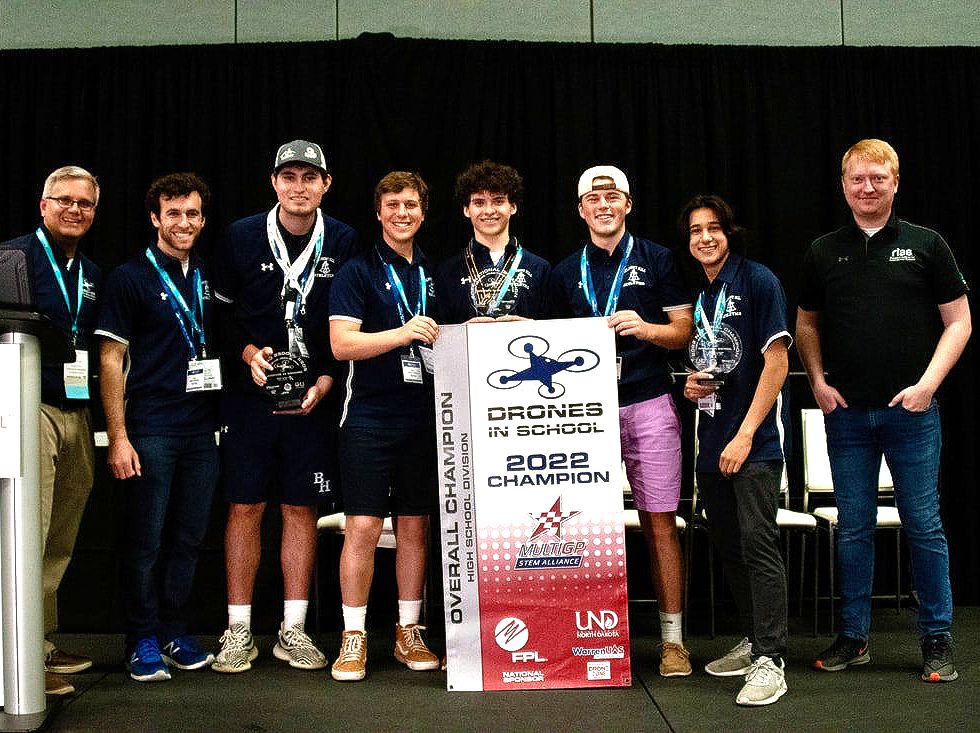
Each Team Can Have Two to Seven Students
As mentioned above, the structure of a Drones in School program can take many forms. However, when race day arrives, each team can have between two and seven students participate. All students should be from a single age-division, middle school or high school. Middle School is for students in grades 6-8 (All students on the team must be 15 years old or younger on May 1st of the current season) and High School is for students in grades 9-12 (All students on the team must be 19 years old or younger on May 1st of the current season). When needed a middle school student may “play up” and compete as a High School Student.
Teamwork is Priority Number One
Drones in School team members fill six job roles. While the team works collaboratively throughout the season, each role is responsible for specific deliverables relevant to the competition.
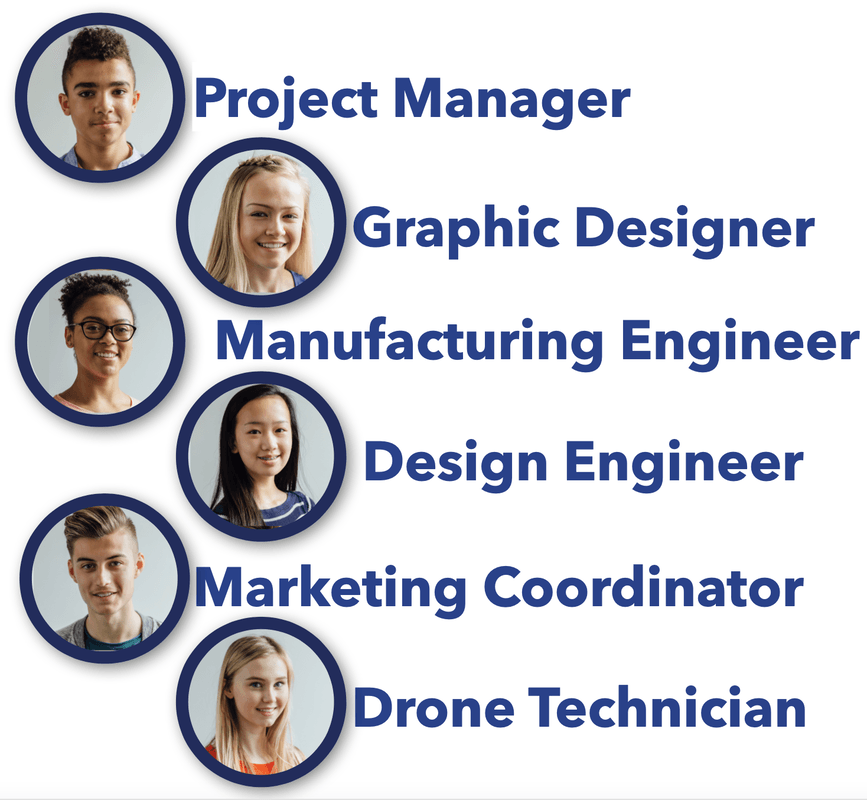
Equipment Needed
Each Drones in School team will operate two racing drones to compete at Live Events (in person). Below is the recommended equipment to start a single team.
1 - VelociDrone FPV Racing Simulator
- Over the course of the season, schools have the opportunity to compete by participating in Simulator Races using VelociDrone. VelociDrone is also the #1 way to improve piloting skills. For our races you will need a VelociDrone license plus the Micro Class Quads Premium Content Add-On. Don't have Velocidrone?
Contact Us for special academic pricing options.
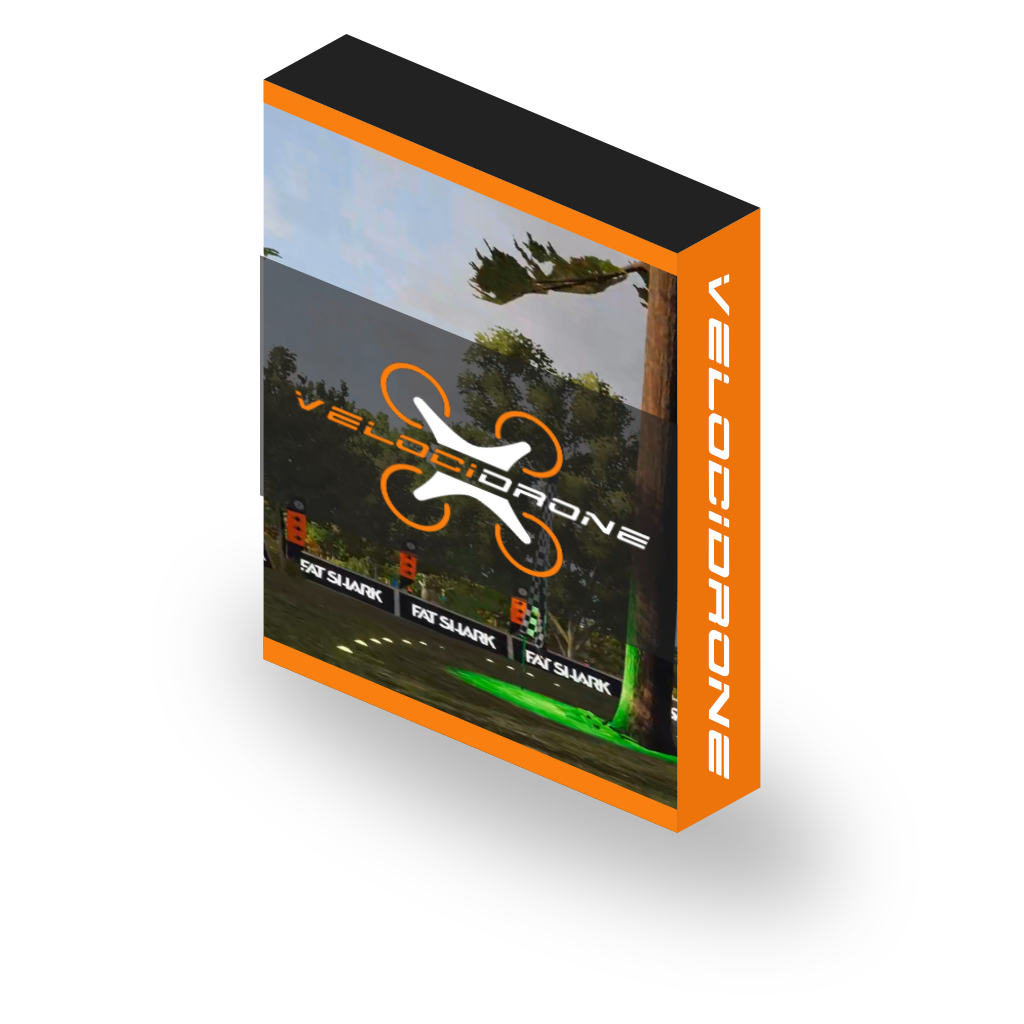
2 - FPV Racing Drones
- Drones in School utilizes small-scale FPV (first-person view) racing drones (120mm, side-to-side) to allow for safe, indoor flying. Flying a racing drone is much different from flying a traditional drone like a DJI or Parrot. These drones require practice to control, so don't be surprised if it takes a little while to get good at flying.
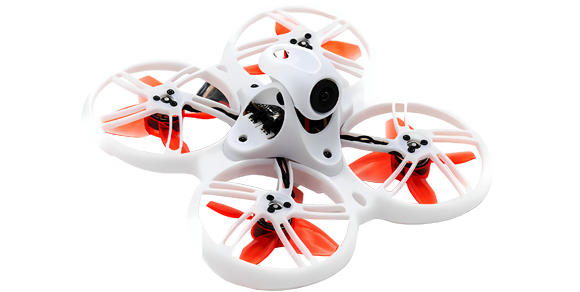
2 - Controllers (Transmitters)
- Each FPV racing drone needs a controller for the pilot to operate the aircraft. Your controller can also be used with the Velocidrone FPV Simulator to help pilots improve without the risk of crashing their actual racing drones.
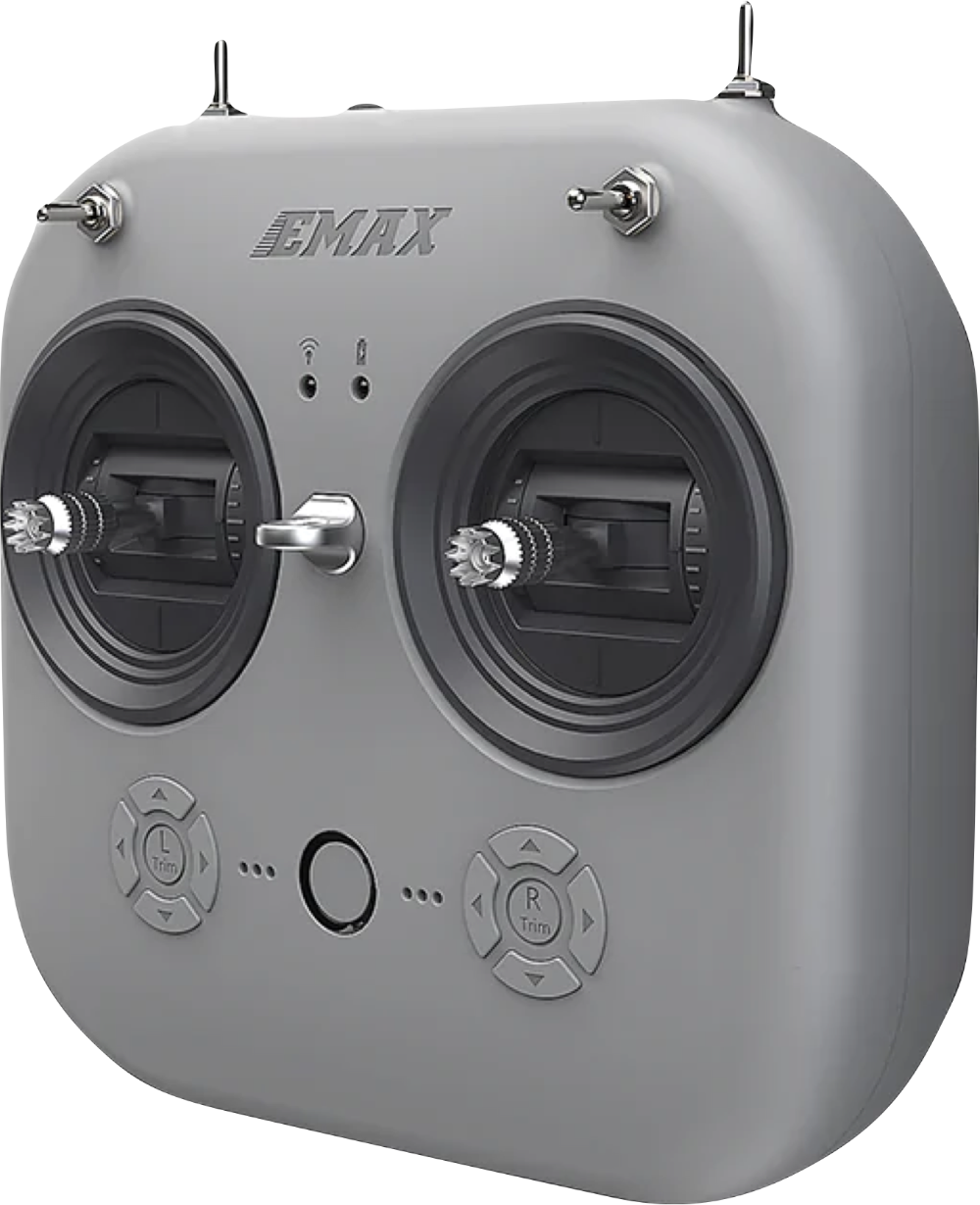
2 - FPV Goggles
- To race in our head-to-head races, pilots use first-person-view (FPV) goggles to fly from the cockpit view of the aircraft. Each drone has a small camera on board that provides a perspective for the pilot, which is an incredible experience. FPV racing puts your student in the pilot's seat for an unforgettable feeling they won't experience anywhere else.
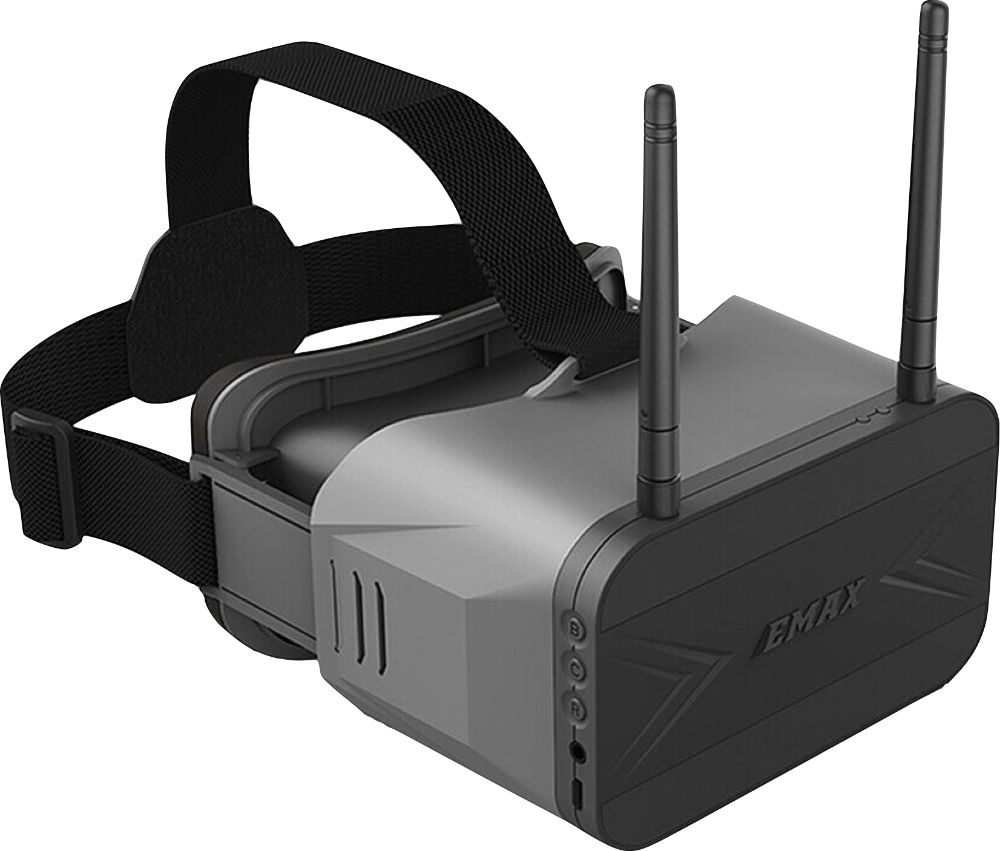
Batteries and Chargers
- Each team will need extra batteries and a battery charger. FPV racing drones run on small lithium polymer (LiPo) batteries. These batteries are lightweight, but the flight time is pretty limited. You can expect two to five minutes of flight time on a single battery. We recommend that each team have at least five batteries and enough chargers to charge four batteries at once.
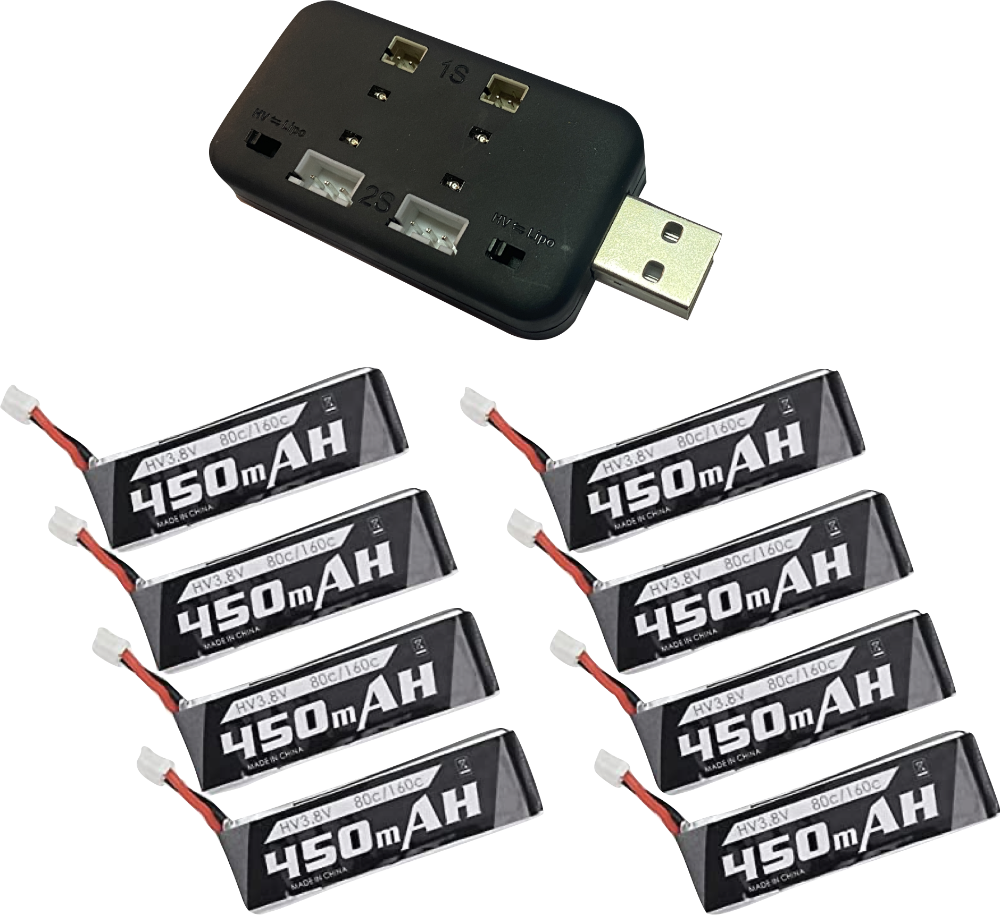
Battery Checker
- Battery maintenance is the secret to long battery life and maximum flight times with LiPo packs. To keep an eye on what's happening with your batteries during the season, we recommend that each team have a battery checker to test the battery voltage for each cell in their pack.

As a STEM program focused on student learning, Drones in School does not require teams to buy equipment from a single source, therefore giving each team flexibility to design, test, and iterate to improve their competition aircraft. However, if you are new to Drones in School and want to be sure you are buying equipment supported in our curriculum, you can purchase one of our Team Startup Packages from our online store. This package gives you what is needed to get started with the Drones in School program.
How Much Should We Budget for a Team?
Initial Team Startup Costs:
- Team Startup Package - StarGazer or Emax HDZero Version-$1244.95
- 2 - Drones Kits (Aircraft, FPV Goggles, Transmitter, Charger)
- 10 - Batteries
- 2 - Battery Voltage Checkers
- Spare Propellors
- Spare Motors
- VelociDrone Simulator License - $36.00 (Contact Us for special academic pricing options.)
- Supplies to Setup and Practice Racing (Can be shared if you have multiple teams)
- STEM Drone Racing Gate Bundle - $139.99
- Capture the Flag - Competition Bundle - $369.99
Annual Team Costs:
- Team Registration - $150.00 ($125.00 per team for two or more teams in the same division from the same building)
- Simulator Race Registration (4 Races) - FREE for Registered Teams
- Virtual Race Registration (4 Races) - FREE for Registered Teams
Optional Costs:
- Live Race Registration - These vary based on the host location. Event registration costs range from $25.00 to $100.00
- You should also plan for some parts to repair and/or upgrade your equipment. We recommend $100-$500 per year, per team to maintain their aircraft. These costs will be on the lower side of this range with proper maintenance of your batteries and aircraft.
Additional Recommended Equipment
As your team works through the season we recommend a couple additional items to simplify competition.
3D Printer
- As your team develops new designs for their aircraft, having a 3D printer to create prototypes can be extremely useful. The small scale of the drones we use means you do not have to invest in an expensive 3D printer to participate. A printer with a 5-inch print bed will be big enough to prototype a usable frame.
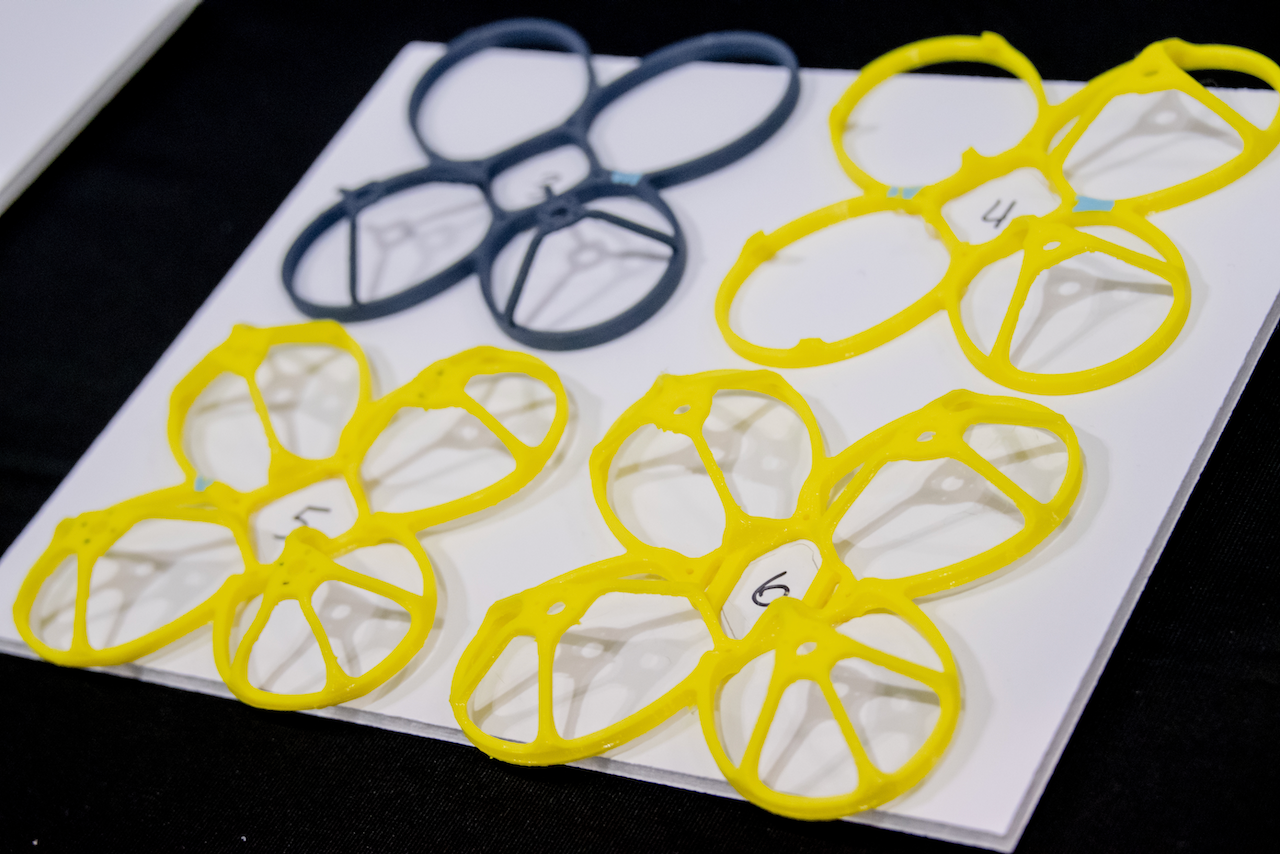
Soldering Iron
- Flying a racing drone means you will have crashes, which means things will break. Having a good quality soldering iron and learning how to use it can save you and your team some money with repairs and provide an opportunity to learn valuable skills for future work in electronics and engineering.
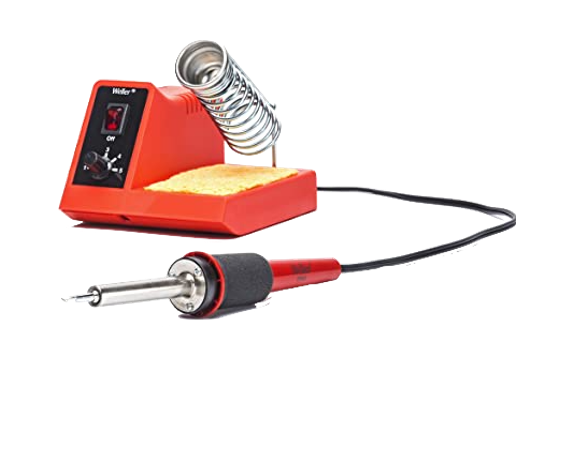
How Do We Compete?
Once you have your equipment and your team is organized, you will register your team with Drones in School for the season. The season runs from the start of school until the Championship Race in late April or early May. However, race events typically begin in November and continue until the middle of March.
During the school year your team will have the opportunity to compete in various sanctioned race events. As you team competes, they collect National Race Points and get closer to earning an invitation to the National Race held at the end of each season.
Read on to learn about the three Race Event formats in Drones in School.
Three Race Event Formats
Simulator Races
Virtual Races
Live Races
Click each tab below to learn more...
| Event Type ➞ ➞ ↓Team Submission↓ | Simulator Event | Virtual Event | Live Event |
|---|---|---|---|
| Velocidrone Sim | ✓ | N/A | N/A |
| In-Person Racing | N/A | ✓ | ✓ |
| Stock Drone Permitted | N/A | ✓ | No |
| Payload Required | N/A | No | ✓ |
| Marketing Video | N/A | ✓ | ✓ |
| Team Portfolio | N/A | ✓ | ✓ |
| Team Display | N/A | ✓ | ✓ |
| Capture the Flag | N/A | N/A | ✓ |
| Submission Type | Online Through Velocidrone Nemesis Racing | Online Submission of Files and Race Video | In-Person, On Location |
What Do We Bring To a Competition?
Depending on the event, your team will compete in the following areas.
Head-to-Head Racing
- Head-to-head racing is how we started. This is one drone pilot flying against another drone pilot to see who can get the most laps in a two-minute race. All head-to-head races are flown with FPV goggles.
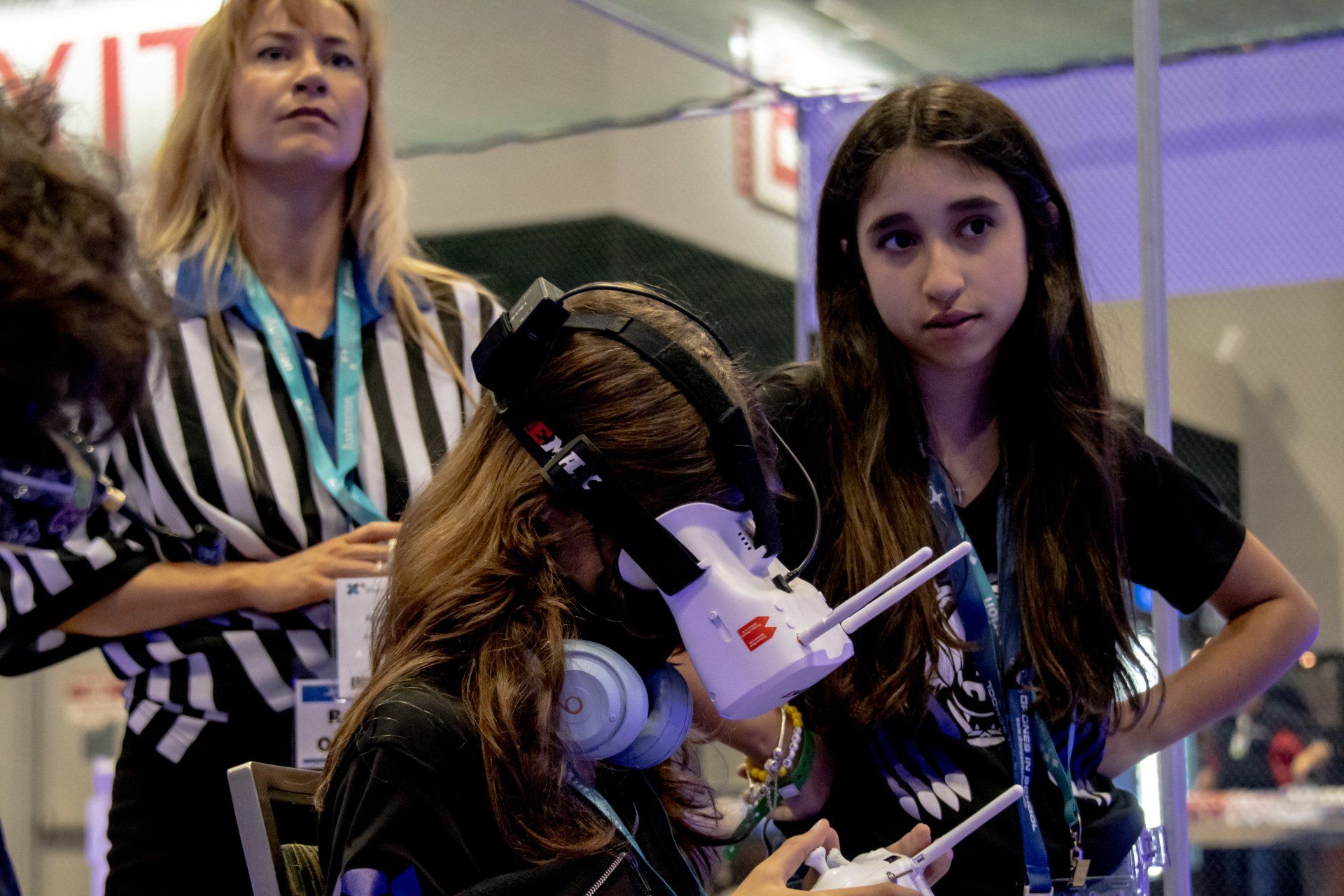
Capture the Flag Racing
- For Capture the Flag Racing, each team has two drones. These drones are flown over ten beacons that change color to indicate which team has "ownership" of that flag. Your team's goal is to capture the most flags and land on their starting pad before the two-minute time expires.
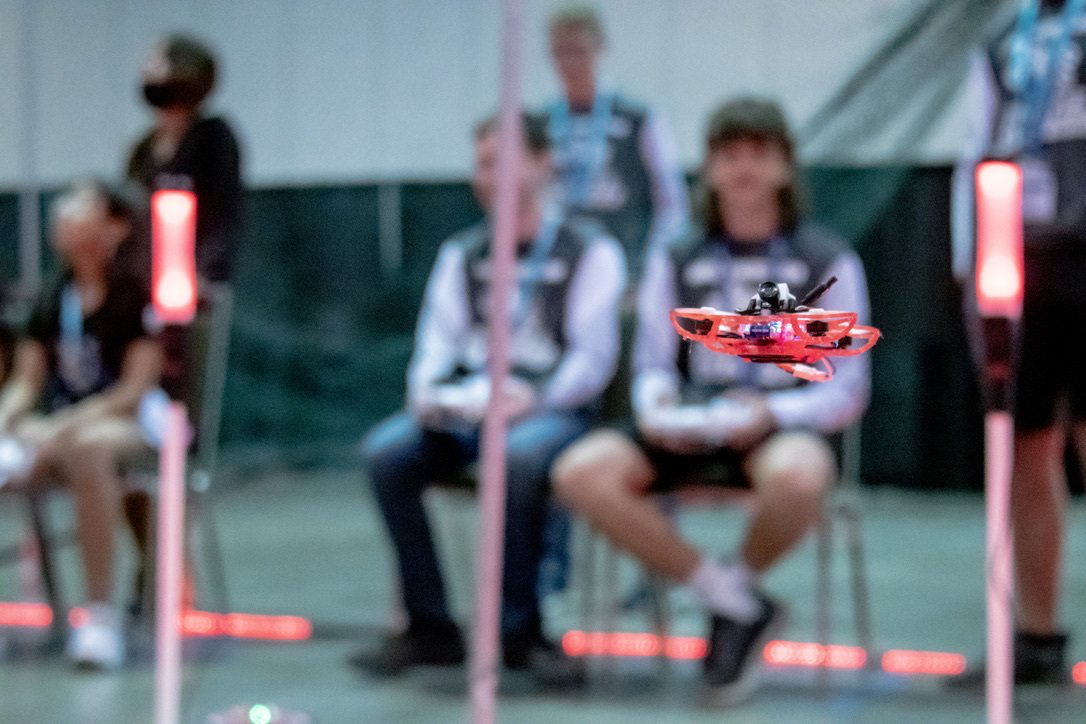
Team Display
- Your team's display summarizes the learning that was done during the season. This display is judged at each event on the areas of marketing, design, and project development.
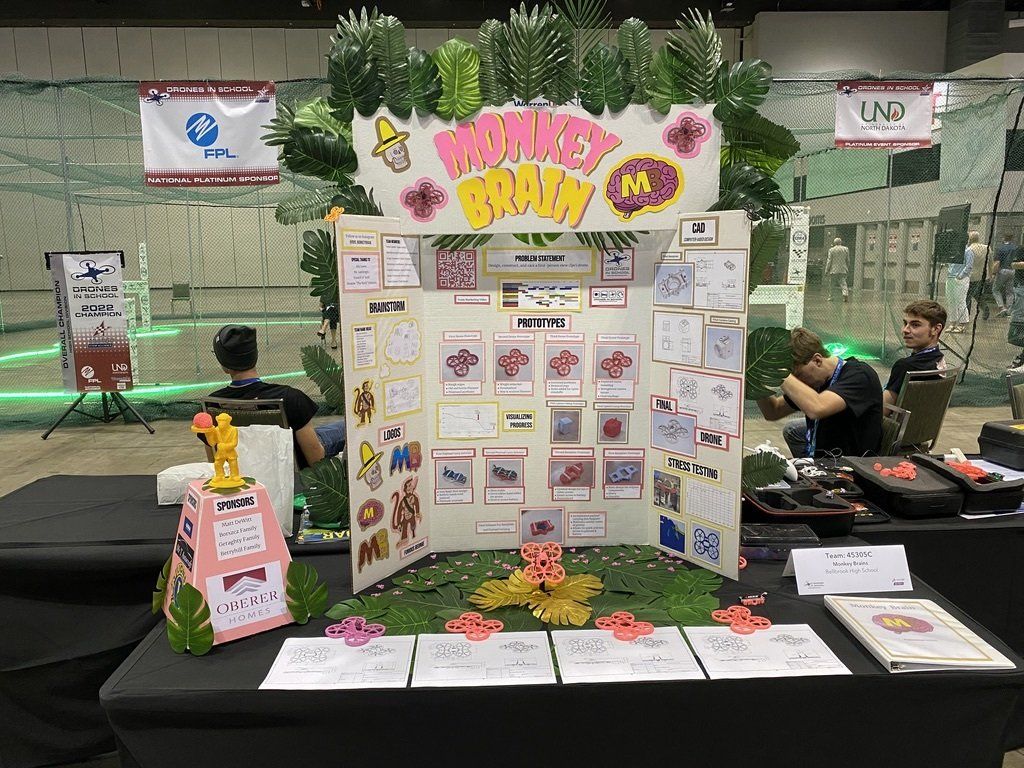
Team Portfolio
- Your team's portfolio provides a deeper look at what your team has done during the season. In addition to showcasing the team's work on graphic design, the portfolio also highlights the engineering, project management, and team work each group has completed.
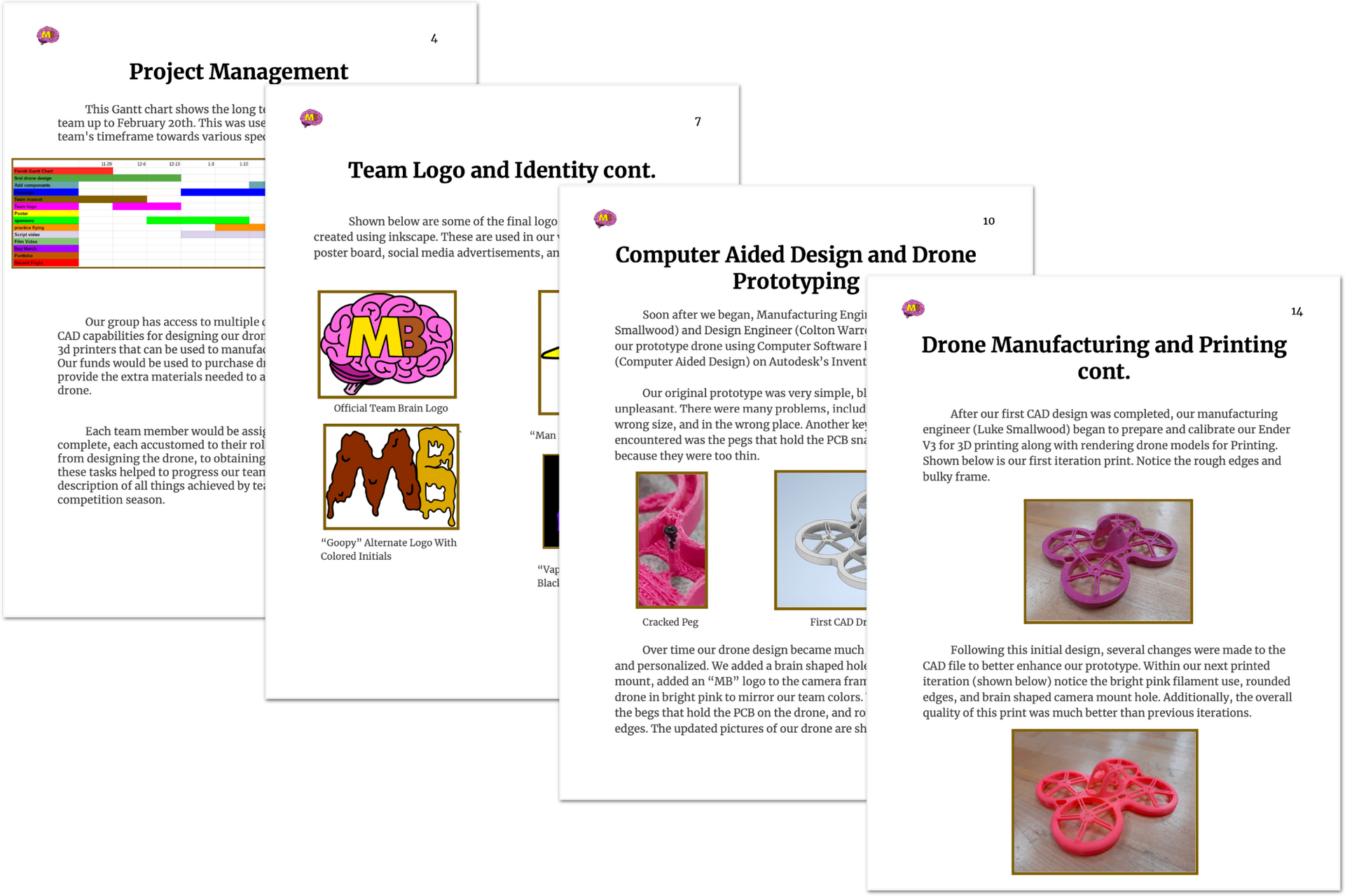
Click Here for an Example of a Team Portfolio
Marketing Video
- Each team creates a short marketing video that highlights who they are and what they do. This video can be used to promote the team to the community and recruit organizations to support your team through financial sponsorship. Videos are submitted online to be judged before each event.
Each race event can involve one or more of the competition areas above. Most events involve a minimum of Head-to-Head Racing. In addition to overall race event placement, there are place awards for each competition category. This allows each team to showcase their effort and a chance to be recognized for exemplary work. Your team can participate in any or all of these competition categories.
All of the requirements for each of the competition areas can be found in the current
Season Guide.

